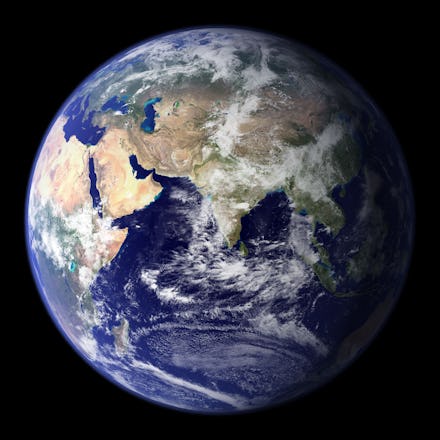Foreign aid isn’t effective without reliable census data. The solution? Satellites.

Holes in census data can lead to skewed research and a misunderstanding of populations around the world. In the U.S., census data is often collected through mailed surveys with phone and email follow-ups. It's an imperfect process — in 2000, for example, the U.S. Census Bureau missed 6.4 million people.
Now, researchers are figuring out ways to supplement flawed numbers by using computer learning algorithms and remote-sensing data to examine human settlements. Some of the technology used is similar to what allows Facebook to detect faces in photos and then automatically tag specific users. But instead of looking for human faces, scientists are able to detect homes and settlements from the satellite images. The process allows them to get more than a rough headcount or a sense of urban density — they're also able to collect information about wealth and class from human settlement patterns.
"We're training machines to first identify objects and then, on top of that, we're actually doing a second level of processing of neighborhood maps — [detecting] different kinds of neighborhoods and what they look like," Budhendra Bhaduri said in a phone interview. He's been working with this technology for years, and currently is a corporate research fellow and the director of the Urban Dynamics Institute at the Oak Ridge National Laboratory in Tennessee. "Very few rich communities live in extremely informal settlements, for example," he said.
The importance of accurate data
For Nigeria, this kind of data is especially useful. Nigeria has only conducted a census four times since its official independence in 1963, and the latest data is from a headcount conducted in 2006, according to the Guardian Nigeria. Outdated numbers have reportedly affected budget decisions and social welfare programs because both government and private agencies have to ballpark the overall population, which the World Bank estimates is about 182 million.
Bhaduri works with several organizations to create population estimates using this technology, and the Nigeria mapping project was inspired by The Gates Foundation's own run-in with problematic census data, Nature reported. The foundation encountered issues while giving out polio vaccines in Nigeria, as the vaccines were sent to areas that didn't really need them while regions with shortages were left underserved.
"It's hard to imagine any societal [project] where you don't need to know how many people are there," Bhaduri said. "Energy, transportation, human health, education — all of these basic human security needs for the planet are driven by the fundamental information of how many people are there, where they are and who they are."
Though the satellite estimates may not be robust enough to replace a census, they're certainly a cheaper option. Replicating the project could cost between $1 million and $2 million per nation, Nature reported, but that price pales in comparison to the overall costs of conducting a census. The U.S. Census cost $13 billion in 2010, and Nigeria's 2006 census cost $266 million. Plus, censuses take a long time to conduct, Bhaduri said.
"In some cases, this will probably be a much better way of generating an estimate. Cost and time are very important considerations," he said. "[We're] hoping that the more different kind of data we get access to, the closer our [population] estimations may be."